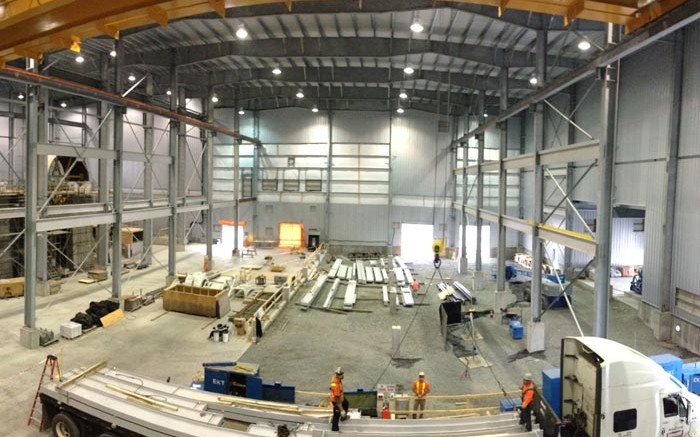VANCOUVER — It’s been nearly three years since developer Rubicon Minerals (TSX: RMX; NYSE-MKT: RBY) started construction at its high-grade Phoenix gold mine in Ontario’s prolific Red Lake camp.
Rubicon reports that Phoenix should hit its production target in mid-2015, with president and CEO Michael Lalonde stating: “Most of the construction and development risk is behind us, as the project is well over half completed.”
The company has invested $241 million in Phoenix’s development over the past three years, and estimates that total remaining capital expenditures at the project should come in at $132 million.
Rubicon has $158 million in cash and equivalents and anticipates it will receive a remaining US$45 million from a streaming transaction with Royal Gold (TSX: RGL; NASDAQ: RGLD) by year-end, as construction and development spending rises.
Under terms of the deal Royal Gold will buy 6.3% of Phoenix production up to 135,000 oz. at 25% of the spot price, and thereafter, 3.2% of production at the same price.
Rubicon says that mill construction remains on schedule, as Phoenix’s semi-autogenous grinding and ball mill are being assembled. Construction of the elution plant — which extracts gold from the carbon-in the-leaching process — is close to completion, with related electrical work remaining to be done. The foundations of the carbon-in-leach tanks have been poured and the tanks are being made on-site. The company estimates that $55 million will be needed to finish the mill and related infrastructure.
Meanwhile, the company has completed 1,900 metres of a planned 8,000 metres in total underground development at Phoenix’s 685-metre level and above. In addition, an exploration drift on the 244-metre level has been completed, which has helped Rubicon operate two drills and install 18 drill stations.
The company says that underground development is slightly behind schedule, and the company has taken steps to improve rates going forward. Rubicon reports $31 million in total underground development capital remaining to the start of production.
According to a preliminary economic assessment (PEA) released in June 2013, Phoenix is expected to produce 165,300 oz. gold annually at all-in sustaining costs of $913 per oz. Life-of-mine throughput is estimated at 1,900 tonnes per day, with gold recoveries pegged at 92.5%.
At US$1,200 per oz. gold the mine would generate a US$243-million after-tax net present value (NPV) at a 5% discount rate, along with a 14.8% internal rate of return (IRR).
Rubicon is in the midst of a 38,000-metre infill drill program along the entire length of Phoenix’s F2 deposit, which lies between surface and the 610-metre level. Results to date have “confirmed [the company’s] expectations at F2,” with 7,000 metres completed in June.
Most of Phoenix’s current resources lie in the inferred category, which totals 7.5 million tonnes grading 9.26 grams gold per tonne for 2.2 million contained oz. The deposit hosts another 4.1 million indicated tonnes averaging 8.5 grams gold for 1.13 million contained oz. gold.
Rubicon cleared a socio-political hurdle in August when the Ontario Divisional Court dismissed an application for judicial review that was previously filed by the Wabauskang First Nation regarding the company’s production-closure plan at Phoenix.
Wabauskang — a small community 100 km south of Red Lake — was questioning the Ontario government’s authority to approve the project.
The group is now moving to appeal the decision.
Rubicon has a 52-week trading range of 69¢ to $1.95. Shares are up 35% since June, and closed at $1.43 per share at press time. The company has 371 million shares outstanding for a $530-million market capitalization.


Be the first to comment on "At Phoenix in Red Lake, Rubicon says development risk is ‘behind us’"